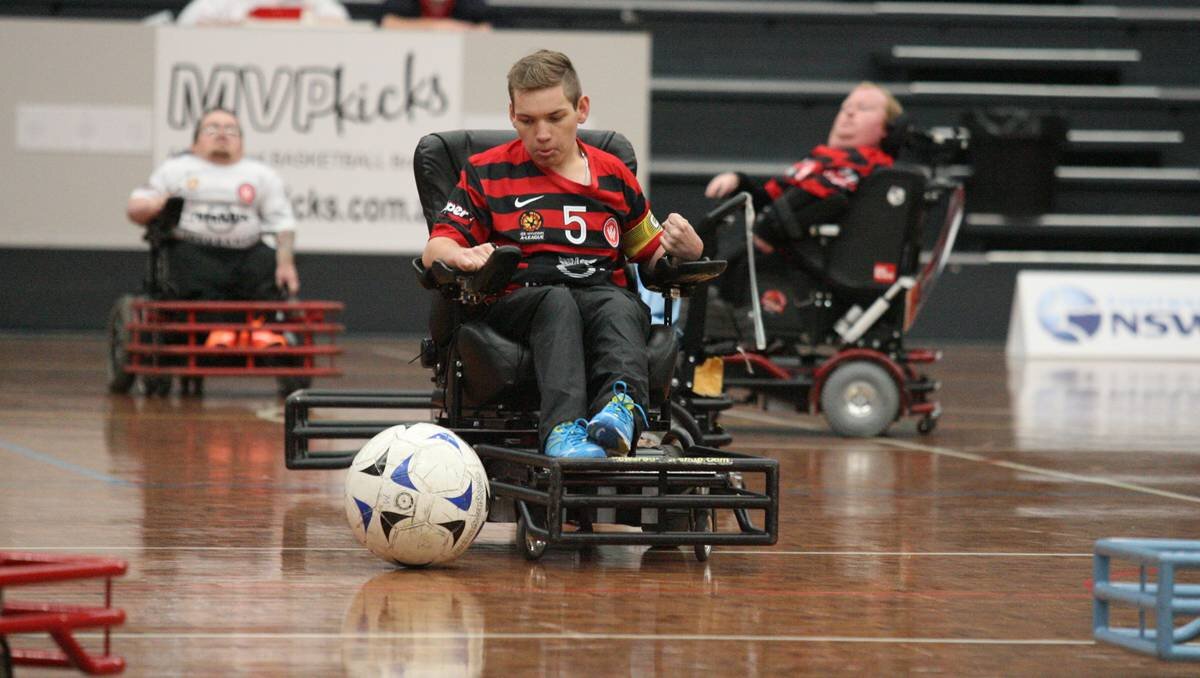Powerchair Football
Introduction
Powerchair football is a modified version of soccer for electric wheelchair users. It is played in a gymnasium on a regulation basketball court. There are two teams of four players (including the goal keeper). The objective is to score more goals than the opposing team.
The game originated in France in the 1970s. The international governing body for Powerchair Football is Federation Internationale de Powerchair Football Association (FIPFA), established in 2006. Their headquarters are in Paris. FIFPFA now has 21 member countries, including Australia.
How to PLAY Powerchair Football
Powerchair football is played in specialised electric wheelchairs, called powerchairs. Each powerchair must have 4 or more wheels, a lap belt and a foot guard. The players use the foot guard to kick and block an over-sized soccer ball (33 cm in diameter).
A goal is scored when the ball fully enters the opposition’s goal area. The game is won by the team who scores the most goals.
There are four players on each team, including the goalkeeper. The 40 minute game is split into 20 minute halves, with a 10 minute half time break.
The game is similar to able-bodied soccer. However powerchair football has two distinguishing rules:
“Two-on-one”: Only one player from each team is allowed within 3 metres of the ball on court (except in the goal area). This means teammates have to spread out which enables better game flow.
“3-in-the-goal-area”: The defending team is only allowed 2 players in their own goal area.
The penalty for infracting either of these rules is loss of possession and or/ a free kick-in from the sideline for the opposition. Able-bodied soccer has penalty “throw-ins”. However “kick-ins” are used in powerchair football because many players have impaired upper body function.
Who can play Powerchair Football
Impairment Type
To be eligible to play powerchair football the athlete must use an electric wheelchair for daily mobility. Participants include persons with quadriplegia, multiple sclerosis, muscular dystrophy, cerebral palsy, hand trauma, stroke, spinal cord injury and other disabilities.
Classification
Classification is the cornerstone of powerchair football. It keeps the game fair and equal. The FIPFA has made it a priority to establish universal guidelines for classification. They also encourage coaches to learn about classification so they can make optimal team selections.
Classification is done through a bench test. Classifiers get athletes to do a range of movements to check their muscle strength, coordination and how they operate the powerchair. From the bench test they group athletes into one of two classes:
PF 1:
The player has highly significant levels of physical difficulty which affects their overall performance. The areas of impairment include;
• Postural control.
• Head control.
• Driving skills, where particular attention is given to ;
• Reflex activity.
• Fine motor control.
• Gross motor movement pattern.
• Fluency of motor skill movements.
PF2:
The player has moderate to mild levels of physical difficulty which affects their overall performance. However, they have higher functionality than athletes in class PF1.
Click here for more information please from the FIPFA classification rule book.
Where can you participate?
AUSTRALIA
Australian Powerchair Football Association
Contact: Martin Dalrymple – Secretary
Phone: 0419 294 705
http://www.apfa.org.au/
STATE / TERRITORIES
New South Wales
Football NSW
P: +61 2 8814 4400
reception@footballnsw.com.au
Queensland
Sporting Wheelies & Disabled Assoication
P: +61 7 3253 3333
mailbox@sportingwheelies.org.au
Victoria
Powerchair Sports Victoria
P: +61 024 160 174
info@psv.org.au
Australian Capital Territory
Capital Football
P: +61 2 6260 4000
kelly.stirton@capitalfootball.com.auu
Western Australia
Western Electric Sports Association
secretary@wesawa.org
South Australia
One Culture Football
powerchair@oneculturefootball.org
Resources
Videos
Intro to Powerchair Football from FIPFA
Celebrating Powerchair Football Week from Muscular Dystrophy UK
Classification from FIPFA
2016 National Powerchair Football Championships from Football NSW


